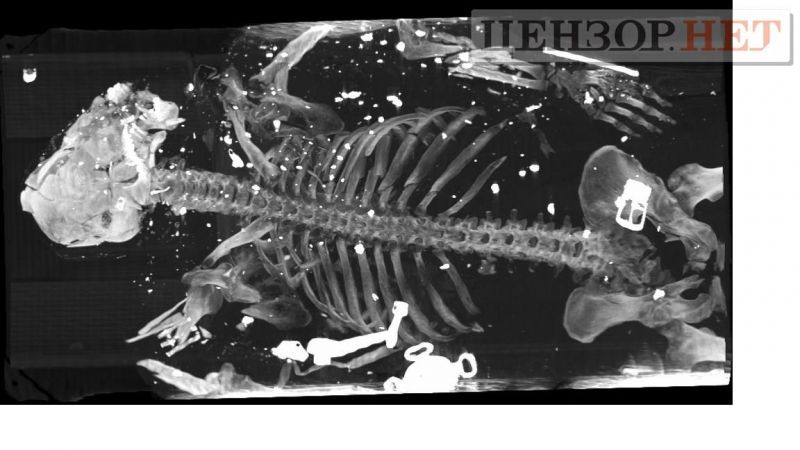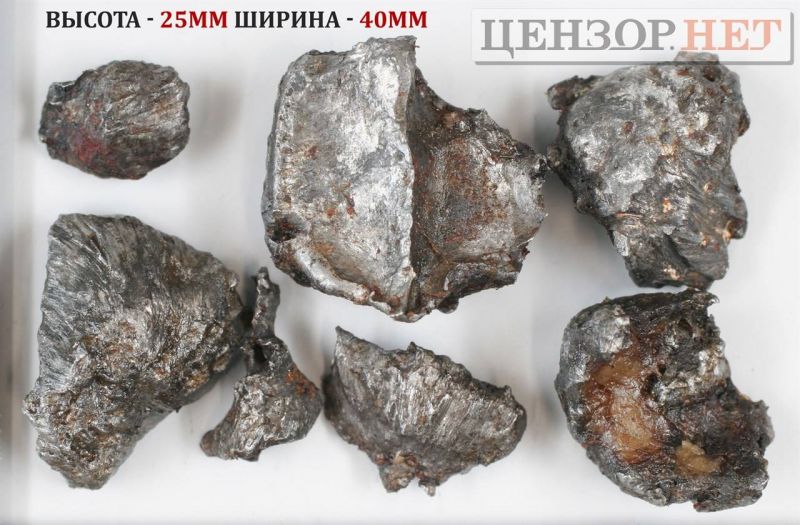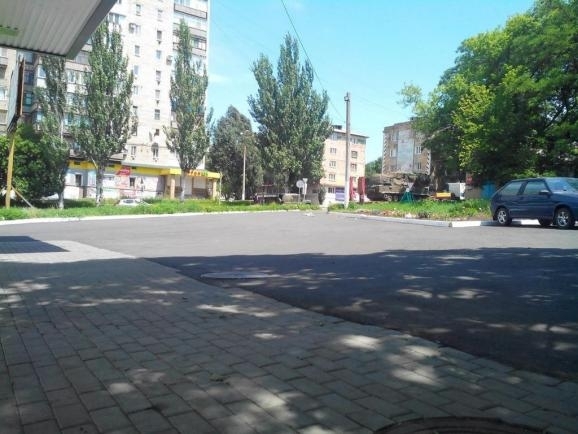Očitno je šlo v Šiški za bolj resno zadevo, če je bila vključena celo letalska policjia s helikopterjem, In za ta nevarna dejanja bo policija gotovo napisala kakšno kazen.Citat:
Uporabnik mr_ pravi:
Eh, a je treba od zacetka? Poglej na kateri strani je clanek, se enkrat preberi, pogooglaj besedo senzacionalizem, na alterju pod iskanje napisi '24ur fail' in preberi podobne clanke. Kolikokrat je Ibra 'strmoglavil' pred golom, ker so mu svetili s tem v obraz. Ali zgresil penal.
malaysian airline part 2
- Ustvarjalec teme shift
- Začetni datum
Uporabljate neposodobljen brskalnik. Ta ali druga spletna stran morda ne bo prikazana pravilno.
Posodobite brskalnik ali uporabite alternativni brskalnik.
Posodobite brskalnik ali uporabite alternativni brskalnik.
Zanimiva serija tvitov.
https://twitter.com/iTasig/status/489727112874835968
Ure ob sporočilih so v CEST. MH17 je bil sestreljen ob 15:20 po CEST.
https://twitter.com/iTasig/status/489727112874835968
Citat:
Roman ‏@MOR2537 Jul 17 11:26
Provezli raketnyy kompleks na tyagache+dve mashiny prikrytiya cherez Torez v Snezhnoye v 12-10.
Roman ‏@MOR2537 Jul 17 11:53
Pokhozh na BUK, verkh zachekhlen byl. pic.twitter.com/AcPnyucacZ
OneMan ‏@iTasig Jul 17 13:03
@MOR2537 @HuSnizhne zenitka.. po samoletam budut pulyat'
Ure ob sporočilih so v CEST. MH17 je bil sestreljen ob 15:20 po CEST.
http://sputniknews.com/world/20150701/1024095872.html
Citat:
The Dutch Safety Board has prepared a draft of its final report into MH17 crash.
The draft, obtained by RIA Novosti, was sent to representatives of Malaysia, the United States, Ukraine, Russia, the United Kingdom, Australia and the Netherlands on June 2.
The countries have 60 days to provide comments on the report, in accordance with annex 13 to the Convention on International Civil Aviation. The Dutch Safety Board will assess the comments it receives and take them into account in the final report, expected in late October.
http://tass.ru/en/russia/806799
V Ameriki izdelano letalo v malezijski lasti z večinoma nizozemskimi potniki je strmoglavilo v Ukrajini. Ne vem zakaj si delajo skrbi okrog tega, menda niso vpleteni.
Citat:
Russia is not satisfied with the idea of setting up a tribunal to prosecute those responsible for the flight MH17 crash in eastern Ukraine, as the investigation of the incident has not been completed and there were no precedents for creating such bodies, Russian Deputy Foreign Minister Gennady Gatilov said on Tuesday, commenting on the discussion of the relevant resolution at the UN Security Council at the request of TASS.
"Essentially, this idea is unacceptable to us for several reasons," the diplomat said. He noted that the investigation of the incident continued, and the report on its results would be released at the end of the year. He pointed to the difficulties connected with the setting of such a tribunal. "We know from our experience that it is a very time-consuming process. In this case, we consider it politically illogical and unnecessary," Gatilov said.
V Ameriki izdelano letalo v malezijski lasti z večinoma nizozemskimi potniki je strmoglavilo v Ukrajini. Ne vem zakaj si delajo skrbi okrog tega, menda niso vpleteni.
Hočete priče? Imamo priče.
http://mashable.com/2015/07/15/mh17-missile-launch-site/
http://mashable.com/2015/07/15/mh17-missile-launch-site/
Citat:
On the afternoon of July 17, 2014, Pyotr Fedotav and his mother, were working in their garden in the tiny hamlet of Chervonyi Zhovten, a few miles south of Snizhne, in eastern Ukraine.
Suddenly, they heard a powerful blast and the earth shook beneath their feet, making them both fall over.
"It was such a huge explosion," the 58-year-old said recently. "It felt like the end of the world!"
The blast was the sound of a missile launcher, firing its weapon into the sky, he said.
"It was a big missile and it wobbled as it flew right over our house in the direction of Torez," he added, pointing in a northwesterly direction.
He said he watched as the missile struck a plane and fiery debris fell to the ground.
...
Fedotav said he knows who did it.
"The militia were everywhere here, they controlled this area, and they were in that field," he said, with reference to the pro-Russian rebels.
Which field, I asked, for clarification.
"On the road between the village [Chervonyi Zhovten] and the main road," he said. "If you turn from the main road, it's 150 meters."

Fedotav gave a similar account to Reuters in March. The news agency also spoke with other local residents who corroborated Fedotav's story.
Later, a reporter from Russian state-sponsored channel RT returned to the village to interview Fedotav. At that point, though, he told RT that Reuters had lied about him saying off camera that he'd seen the missile launch.
A few months later, however, he repeated to me, and the French photographer and Ukrainian journalist who were with me, what he'd told Reuters initially — that he saw the missile fly overhead, moments after it was launched, and that the came from a position held by the Russian-backed rebels.
Why, I asked, did he tell RT that Reuters had lied?
Fear, he said. He was afraid that what he'd said could endanger him and his family, he explained. To be clear, I asked him again: How do you know the rocket was launched in this field, and that the militia shot down the plane?
"I was here and it was impossible to not see and hear it," Fedotav said.
Fedotav doesn't hide the fact that he supports the pro-Russian rebels but that only strengthens the believability of his account, which places the blame for the tragedy squarely on them.
...
Nearly a year before I meet Fedotav, I drove out to Pervomaiskyi with a journalist from The Telegraph on July 22, 2014. I had stumbled across a blog post that used geolocation to narrow down the area where the missile's vapor trail had been spotted. The area put the launch site south of Snizhne — a theory supported by U.S. intelligence.
...
We met a farmer named Vasily who pointed us to an unusual oval-shaped scorch mark in his field — the same field Fedotav described to me almost a year later.
"The field down the way burnt the other day. I don't know why. You might have a look there," Vasily said, gesturing to the area, which is tucked behind a tree line to the north and east, obscuring it from view from Snizhne and the adjacent roadway. He could not recall whether he noticed the burn mark on July 17 or July 18 of last year.
...
Near the burned area were varying track marks, discarded water and beer bottles, cigarette packs with labels in Russian as well as melted fragments of plastic with a particular logo.
Military experts I spoke with were unable to identify the tracks. But the open-source investigative team Bellingcat believe the logo is that of Stelko Plastik, a Ukrainian plastics manufacturer that produce weapon containers.
In late June, 2014, three weeks before MH17 was downed, the company reported that Russian-backed rebels had raided its offices, taking with them more than half a million hryvnia (about $25,000) worth of equipment. Some could have ended up in this field.
http://edition.cnn.com/2015/07/15/politics/mh17-pro-russian-missile-crash-ukraine/index.html
Na žalost so izbrali pičkasto opcijo "pro-ruskih upornikov", čeprav je jasno, da so s sistemom upravljali ruski vojaki. No, časa je do oktobra, včeraj je bil Surkov menda v Donetsku. Če do objave končnega poročila Rusija spakira iz Ukrajine, bo ta akt realpolitike celo imel smisel.
Citat:
The Malaysian Airlines flight went down in the Donetsk area of Ukraine. According to two sources with knowledge of the investigation, a draft of an investigative report authored by the Dutch Safety Board, the lead agency in the investigation, has been distributed for review to numerous agencies around the world including the National Transportation Safety Board, Federal Aviation Administration and Boeing.
The draft investigative report is several hundred pages long. According to one source close to the investigation the draft report included the exact type of missile used to bring down MH17 and the trajectory of the missile.
Another source with knowledge of the report's details says it gives a minute by minute timeline of flight MH17. This source also says not only does the draft report pinpoint where the missile was fired from it identifies who was in control of the territory and pins the downing of MH17 on the pro-Russian rebels.
According to both sources, the report also pins some blame on Malaysia Airlines for how its planes were dispatched that day.
Na žalost so izbrali pičkasto opcijo "pro-ruskih upornikov", čeprav je jasno, da so s sistemom upravljali ruski vojaki. No, časa je do oktobra, včeraj je bil Surkov menda v Donetsku. Če do objave končnega poročila Rusija spakira iz Ukrajine, bo ta akt realpolitike celo imel smisel.
Rusija v protinapadu, izdali bodo svoje poročilo o MH17.
http://tass.ru/en/world/808930
Po navedbah Komsomolske pravde gre za izraelsko raketo na ukrajinskem Su-25. Na vsak način so morali v zgodbo vtaknit Jude. Komedija.
http://tass.ru/en/world/808930
Citat:
The Russian Investigation Committee is inclined to believe that an air-to air missile, which was not made in Russia, shot down a Malaysian Boeing (MH17 flight) over Ukraine a year ago.
"As for the priority version, we have information, which among other things is based on expertise, that the plane was hit by an air-to-air missile. Moreover, the experts assume that the type of missile has been established. The missile is not Russian-made," Vladimir Markin, the Russian Investigation Committee spokesman, told TASS on Wednesday.
Po navedbah Komsomolske pravde gre za izraelsko raketo na ukrajinskem Su-25. Na vsak način so morali v zgodbo vtaknit Jude. Komedija.
http://www.msn.com/en-us/news/...ocid=spartanntp
Australia said Friday it was "sickened" after new footage emerged purportedly of Russian-backed rebels rummaging through the luggage of passengers killed after Flight MH17 was shot down over Ukraine, as a ceremony marked the disaster's one-year anniversary.
Australia said Friday it was "sickened" after new footage emerged purportedly of Russian-backed rebels rummaging through the luggage of passengers killed after Flight MH17 was shot down over Ukraine, as a ceremony marked the disaster's one-year anniversary.
I
Izbrisan uporabnik 474
Torej - Ukrajinci sestrelili potniško (z letalom), uporniki pa vojaško (verjetno BUK-om). Zdaj pa hoče Ukrajina zvalit na upornike/Rusijo...
I
Izbrisan uporabnik 474
Tako je bilo povzeto na LiveLeaku, verjetno se je nanašalo še na preostali del posnetka (neobjavljenega): Ukrajinci bi naj sestrelili potniško letalo z svojim letalom, upornikom pa je uspelo sestreliti vojaško letalo. Zdaj bi pa rada Ukrajina vse zvalila na upornike... Definitivno bi naj bilo sestreljeno še eno vojaško letalo.
Vojaško letalo pa je sestrelil puff the magic dragon, ki je nato še zacopral, da sta oba izginila?
Tistega dela, kjer sanjajo o 5ih padalcih, nisi slišal?
MH17 je razpadel na 2 kosa (nos, preostanek letala s krili), ki sta padla par kilometrov narazen.
Benigna teorija je, da so videli padat 2 kosa in je v zmedi nastalo, kar je. Maligna - vedo, da nakladajo.
Tistega dela, kjer sanjajo o 5ih padalcih, nisi slišal?
MH17 je razpadel na 2 kosa (nos, preostanek letala s krili), ki sta padla par kilometrov narazen.
Benigna teorija je, da so videli padat 2 kosa in je v zmedi nastalo, kar je. Maligna - vedo, da nakladajo.
Podatki iz preiskave še naprej uhajajo
http://uainfo.org/blognews/1437135312-vina-rossii-prakticheski-dokazana-neoproverzhimye-uliki.html
Gtranslate:
http://uainfo.org/blognews/1437135312-vina-rossii-prakticheski-dokazana-neoproverzhimye-uliki.html
Gtranslate:
Citat:
The first photo - an X-ray of one of the crew members of the Malaysian aircraft. He was in the cockpit at the time of the explosion and died on the spot. All fractures - a result of falling submunitions. Here are the points around the skeleton - that is submunitions.

...
The next photo shows a close-up striking element of the "I-beam". Tape warhead antiaircraft missiles supplied with 4 thousands of such elements.

Striking elements of the Russian anti-aircraft missiles 9M317 extracted from the bodies of the crew and the ship hull
This is extracted from the aircraft striking element and a full-size counterpart, extracted from Russian missile anti-missile system "Buk M1-2" sample in 1998. In Ukraine, the missile is not supplied, but in other countries - yes.
Ukrainian "Buki" equipped with old Soviet missiles 9M38. The upgraded missile "Buk M1-2" our anti-aircraft gunners can not shoot. But the Russian "Buk M1-2" can apply both types of missiles.
...
Special forces of the NATO countries have been able to buy Russian missiles "Buckow" on the world arms market specifically for the examination.
At missiles "BukM1-2" has its own distinctive features - striking elements of the "I-beam" are used in the old anti-aircraft missiles of the old Soviet "Buk M1". But they are smaller. And they turned out to be a different chemical composition. Therefore, the investigation reliably excludes any possibility defeat Ukrainian ship missiles.
...
The investigation has materials that allow us to speak of belonging "Buka" to specific military units of the armed forces of the Russian Federation . And here . Established many details and even specific Russian soldiers, including one general.
International Tribunal for the Boeing 777 will result in the same process as in the case of the destruction of the US aircraft over Lockerbie, Scotland, Libya's intelligence services implemented.
Putin is moving towards Gaddafi.
The prosecutor's office in the Netherlands is sure definitive findings of the investigation, and said that the result will be indicted on war crimes .
btw, nizozemska je želela UN resolucijo, ki bi se sprejela "vnaprej" in sicer, da se UN zavezuje, da bodo preganjali odgovorne za sestrelitev letala.
Verjetno ni nobeno presenečenje, da je rusija dala veto na to in resolucija ni bila sprejeta:
http://www.government.nl/issue...7-tribunal.html
Verjetno ni nobeno presenečenje, da je rusija dala veto na to in resolucija ni bila sprejeta:
http://www.government.nl/issue...7-tribunal.html
Kdo pri PM si je izmislil ta veto. Vsakemu, ko kaj ni po godu uporabi ta qrčev veto. Veljati bi morala večina, zato pa ni niti ena resolucija o bilo čemu uspešna. Enkrat veto Američani, drugič Rusi, tretjič Kitajci







